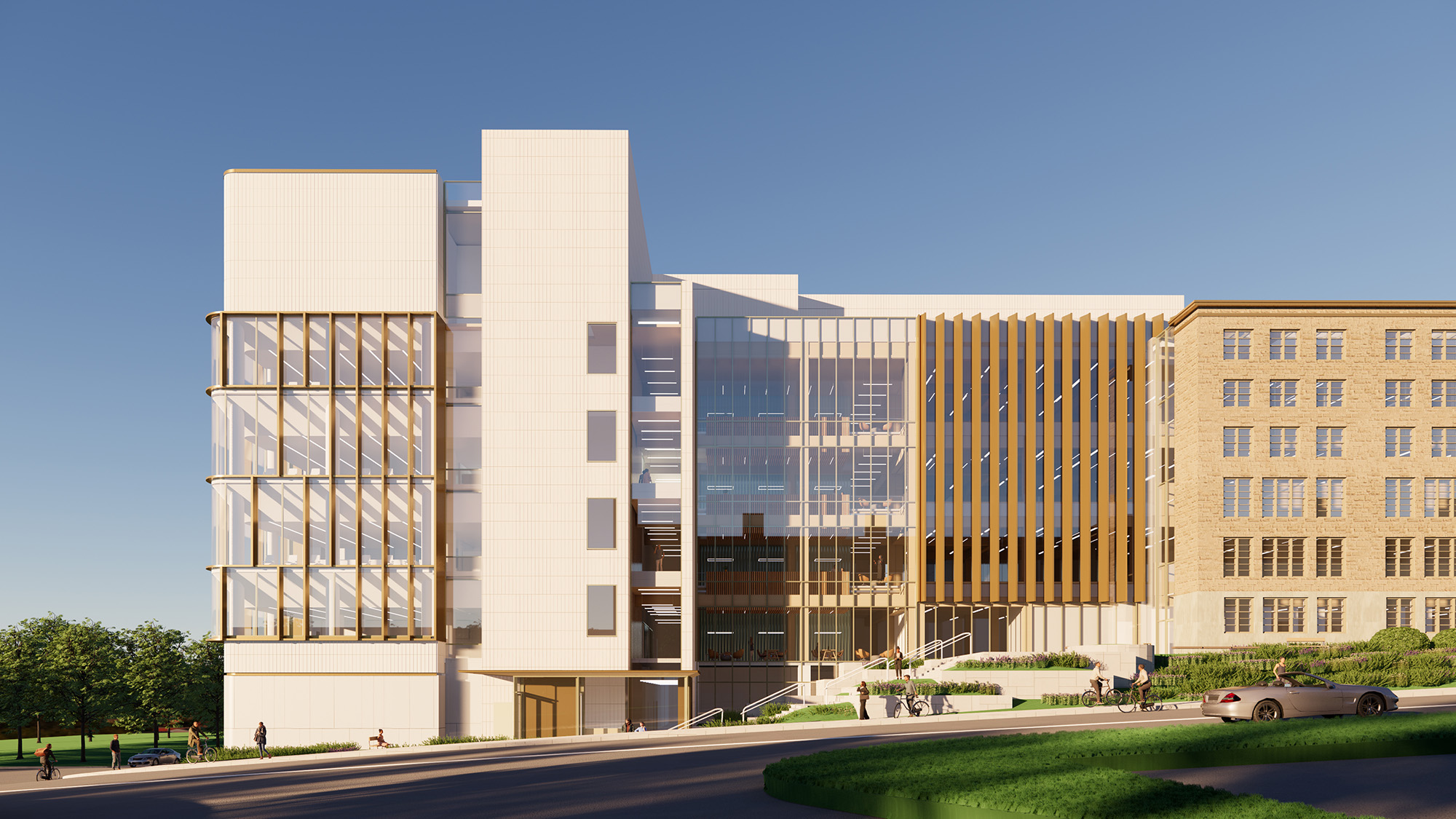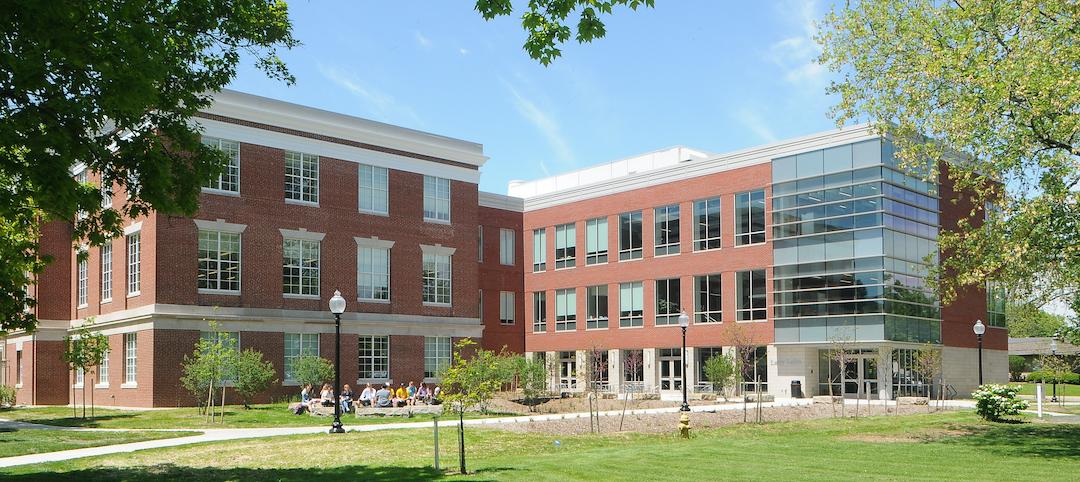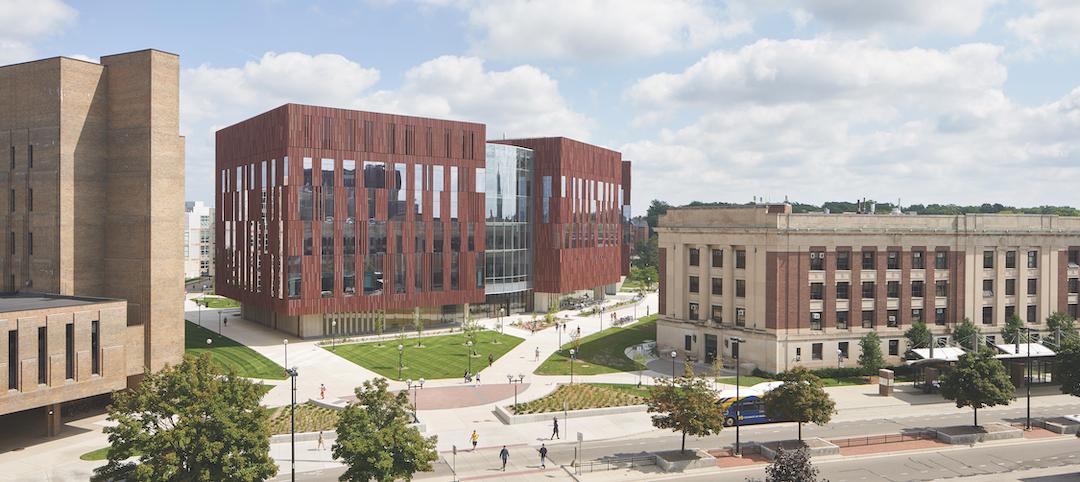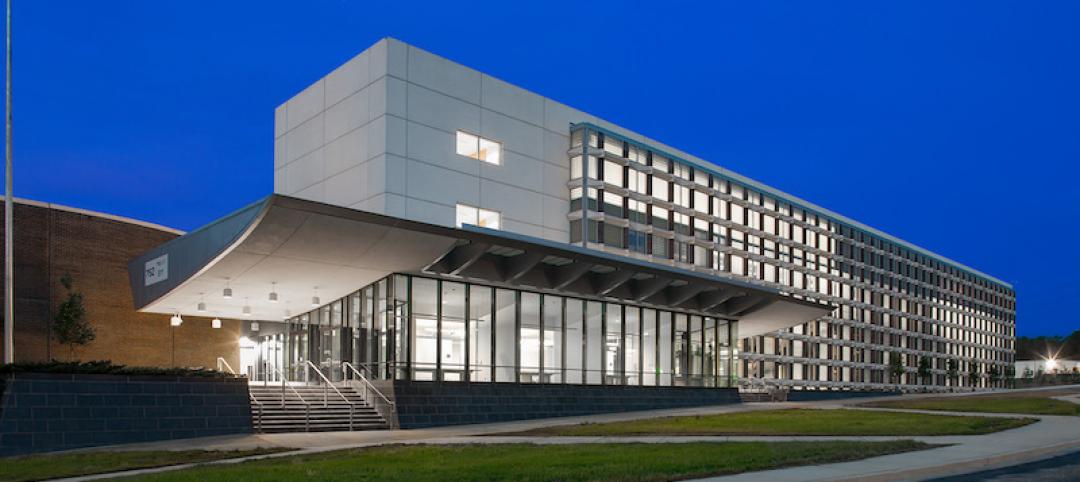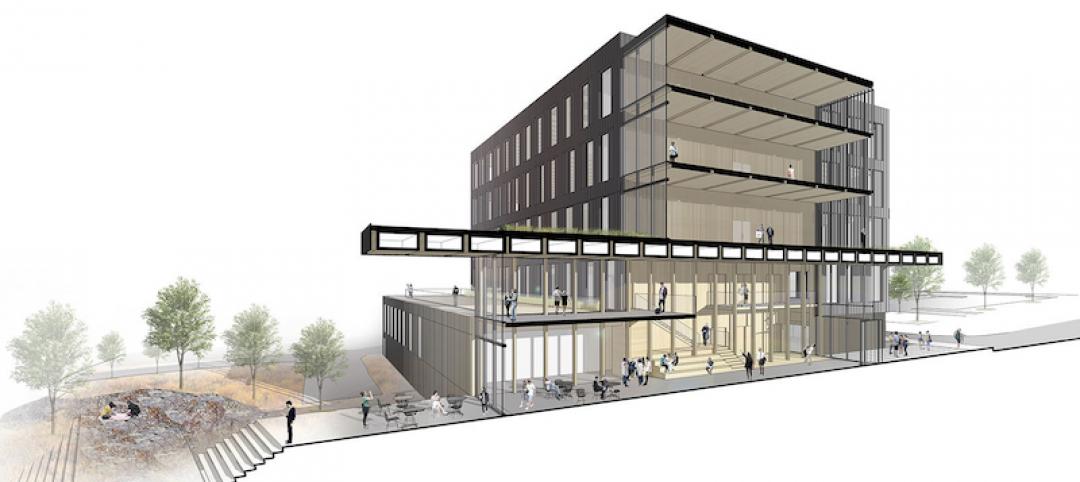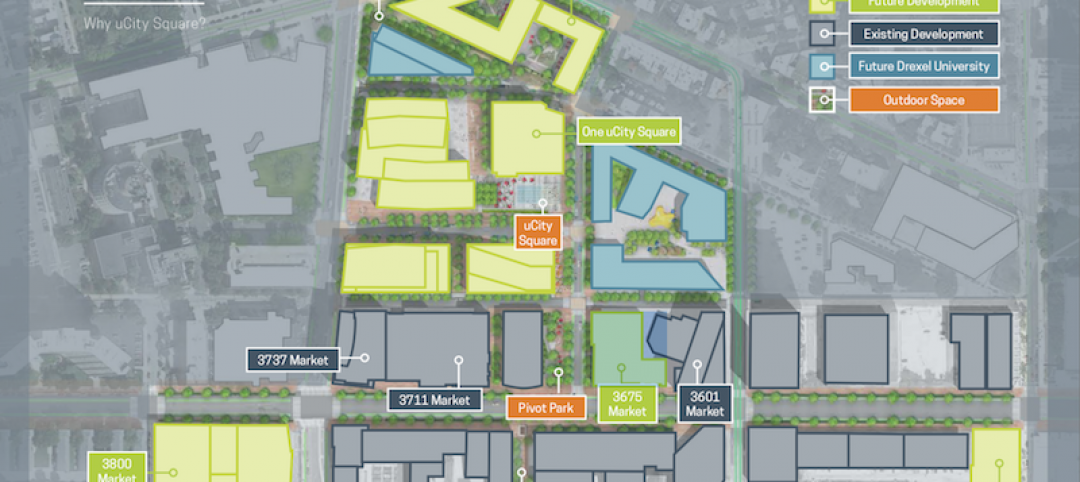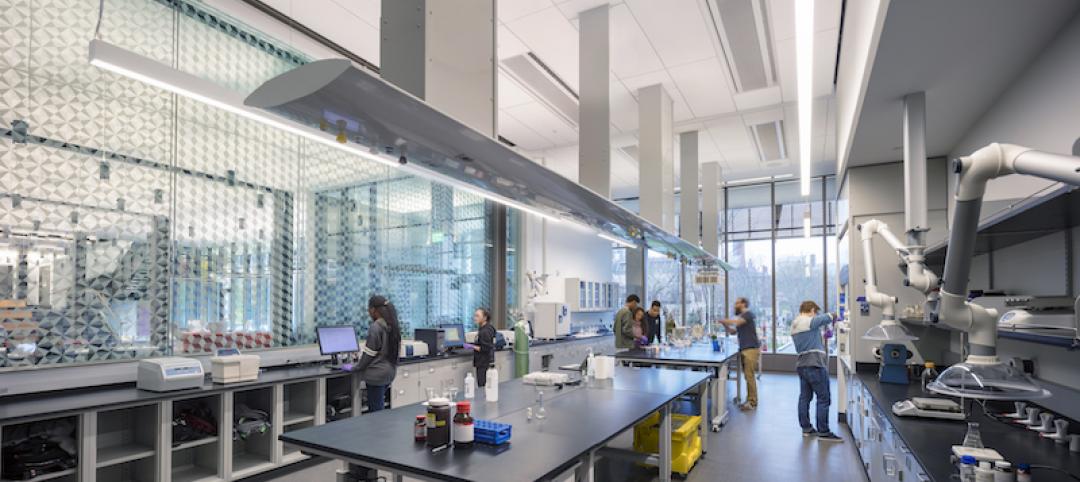Construction on the Atlantic Science Enterprise Centre (ASEC) has begun. Designed by Diamond Schmitt, in association with EXP, the new ASEC facility will provide federal scientists and partners with state-of-the-art space and equipment to collaborate on research opportunities, understand, protect and sustain Atlantic freshwater and coastal ecosystems in Canada. The design of the new building will reflect the heritage of the site, while establishing an open and inclusive environment that makes aquatic science more accessible.
The new ASEC will occupy the former home of the Collège Notre-Dame-d’Acadie which was originally founded and run by the Sisters of Notre-Dame-du-Sacré-Coeur. Opening in 1949, it was the first institution of higher education for Acadian women. The building was purchased by the Government of Canada in 1982 and reopened in 1985 as the Gulf Fisheries Centre.
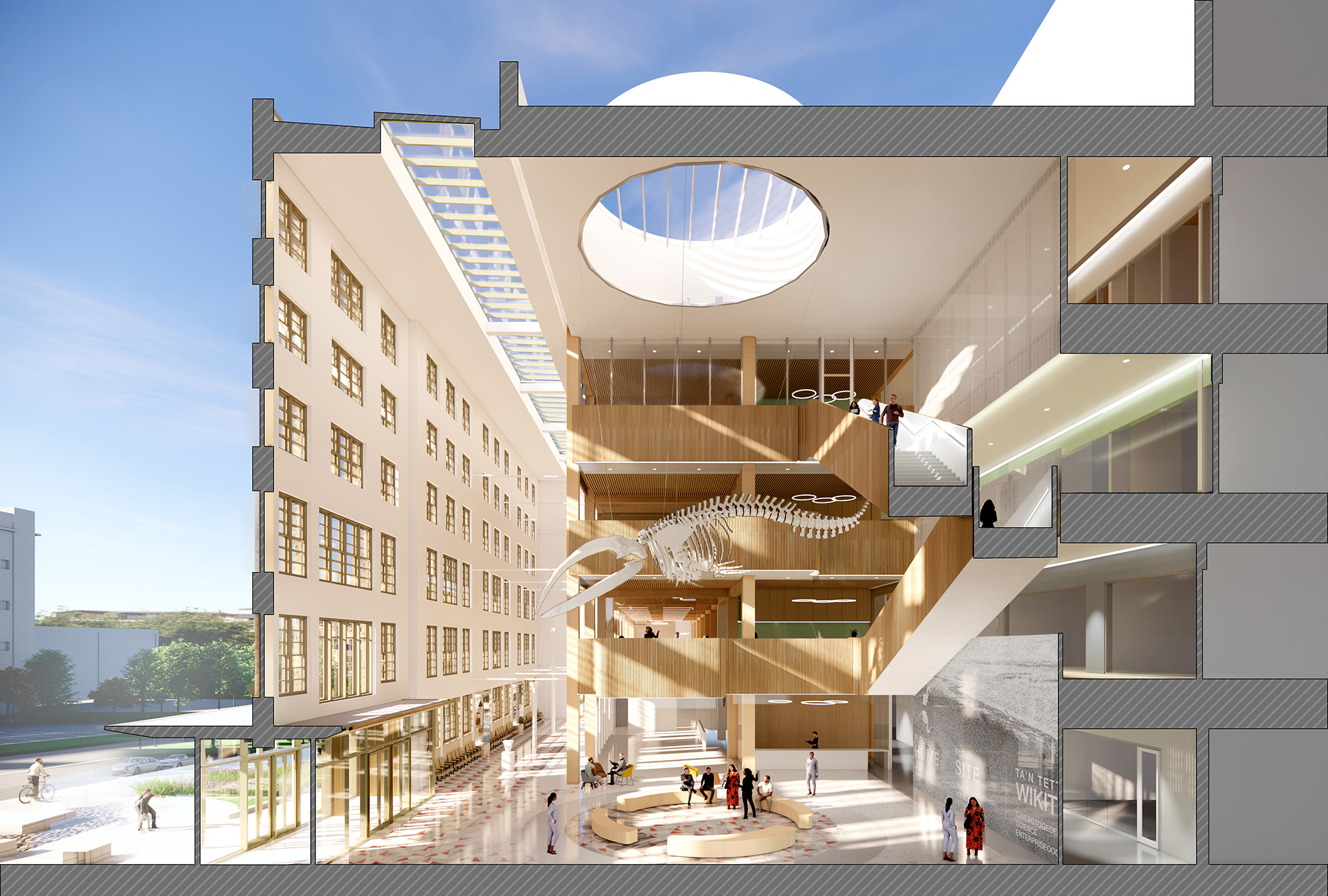
Through consultation with the Sisters, the prominence of the Collège’s main west heritage façade will be retained and serve as a principal element in Diamond Schmitt’s scheme. It will be centrally positioned and anchor the new facility, with the existing main entrance remaining as the principal entry point. The design will interpret the building’s historical pavilion character and strive to commemorate its origins by integrating and adapting key elements and spaces into the site’s now expanded program.
Atlantic Science Enterprise Centre (ASEC) design
Visitors and staff alike will be welcomed into the building through a full-height, four-storey Atrium and skylit Galleria which will serve as an exhibition space to commemorate the Sisters, provide a place for science on display, recognize Indigenous communities, and serve as a place for gathering. The Atrium and Galleria will act as the connective tissue between the building’s different programming components, while also establishing the importance of the public realm which includes a flexible multipurpose room, Mawiomi—an Indigenous Gathering space, informal and formal meeting spaces of varying sizes.
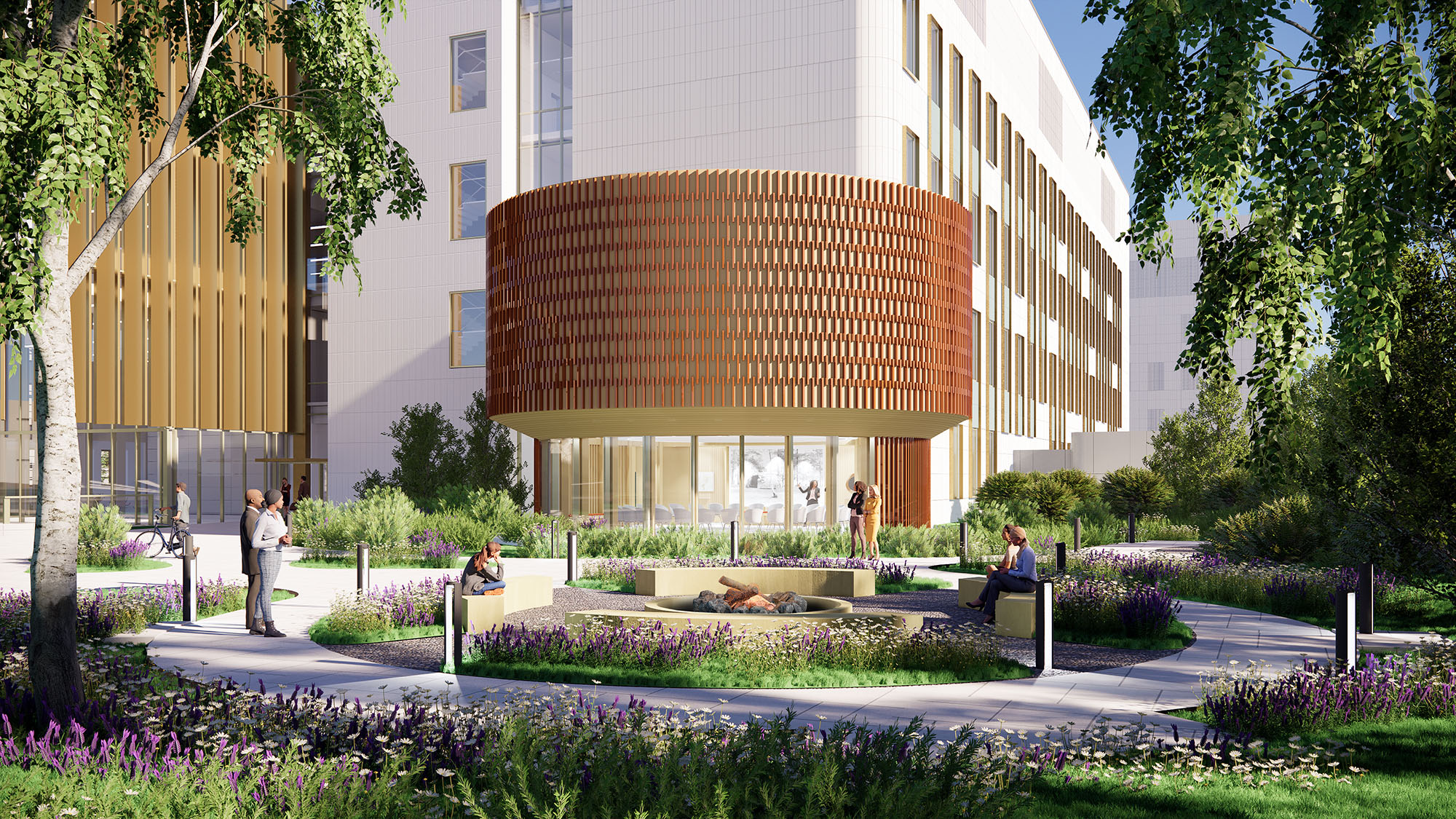

The net-zero carbon facility will allow the scientific work it will host to be advanced in an energy efficient and sustainable manner. Science areas will be organized around the creation of neighborhoods that group similar types of investigation together, encouraging the sharing of resources and equipment. This plan creates synergies between those groups, while also providing opportunities to foster cross-disciplinary collaborations. Laboratory space will be well lit with daylight and views, be universally accessible and adapt easily to the daily and future needs of occupants as their research evolves.
A key objective of the ASEC project is to establish new partnerships with First Nations and Indigenous groups through extensive engagement and visioning sessions. Led by Mi’kmaq Elder Noel Millea, Indigenous consultation will seek to create a welcoming space for Indigenous employees and visitors alike, and offer an inclusive environment where Indigenous ceremonies, storytelling, meetings, and cultural training can take place. Indigenous ways of knowing and being will inform the building’s design in a number of ways.
Large open spaces, flooded with natural light will offer places of gathering, spaces for learning and collaboration, and talking circles.The use of wood and glazing will provide a sense of warmth and belonging and open up the facility towards the outdoors, creating connections with the natural surroundings. Visual representations of Mi’kmaq, Wolastoqiyik and Passamaquoddy culture will be found throughout the new facility and its landscape.

The goal of the overall planning and design approach of the new Atlantic Science Enterprise Center is to create a collaborative work environment not only within the laboratories, but with the Department of Fisheries and Oceans headquarters and open partner office areas. This extends into the social spaces where collaborative zones are clustered around the atrium, connecting the floors both physically and visually, and on all levels, bringing together the various partners sharing the facility.
The Atlantic Science Enterprise Centre is being built in three phases to allow for the continued use of the existing building during construction. The site preparation work is currently underway as part of the first phase. The construction of the new science wing to the north of the existing building will begin in 2024.
When it is fully occupied in 2031, the Atlantic Science Enterprise Centre will serve over 700 employees from four federal organizations, including Fisheries and Oceans Canada, Environment and Climate Change Canada, the Canadian Food Inspection Agency and the National Research Council Canada. The Canadian Space Agency will participate in ASEC as a virtual partner.
Related Stories
Laboratories | Jun 24, 2020
CDC set to build the most advanced high containment laboratory in the country
Flad Architects, Page Southerland Page, and WSP will plan, program, and design the HCCL.
University Buildings | Jun 3, 2020
Renovation can turn older university buildings into high-performing labs
David Miller of BSALifeStructures offers technical advice on renovation of college and university laboratories and scientific research facilities.
Giants 400 | Aug 13, 2019
2019 Science + Technology Giants Report: Operational flexibility is a must for S+T buildings
The science and technology (S+T) sector is arguably the industry’s most complex because it caters to a diverse clientele with specific priorities and imperatives, according to Building Design+Construction's 2019 Giants 300 Report.
Laboratories | May 21, 2019
Georgia Tech Research Institute adds 350,000 sf of specialized tech facilities
McCarthy Building Companies with Flad Architects acted as the design-build team.
Laboratories | Apr 23, 2019
Translational health science environments: 6 strategies for open innovation and knowledge transfer
Simply putting researchers and clinicians in the same building with hopes that serendipitous collaborations will ensue will often not yield the outcomes organizations seek.
Sustainable Design and Construction | Apr 9, 2019
One of the largest zero-carbon, net-zero buildings is rising in Spokane
Catalyst will be part of an innovation hub, with Eastern Washington University as its main tenant.
Laboratories | Apr 1, 2019
The Karolinska Institute’s new laboratory building
C.F. Møller Architects designed the building.
| Mar 21, 2019
Preserving Edison's "Corporate" R&D Lab in West Orange, N.J.
Report on Thomas Edison's West Orange, N.J., Laboratory.
Mixed-Use | Oct 25, 2018
Philadelphia’s uCity Square kicks off major expansion drive
This innovation center has several office, lab, and residential buildings in the works.
University Buildings | Jul 5, 2018
Brown University’s Engineering Research Center increases the university’s School of Engineering lab space by 30%
KieranTimberlake designed the facility and Shawmut Design and Construction was the general contractor.


